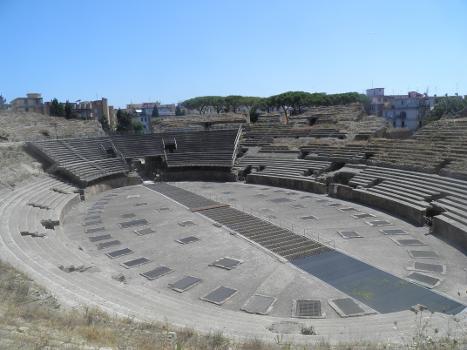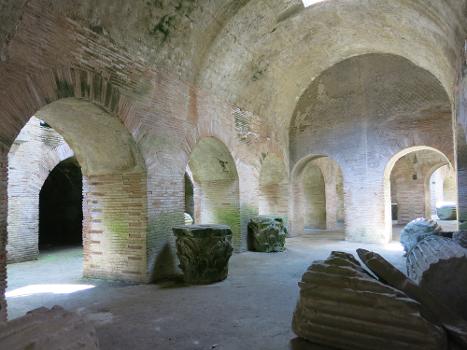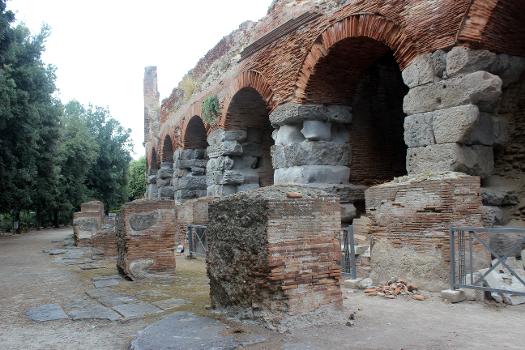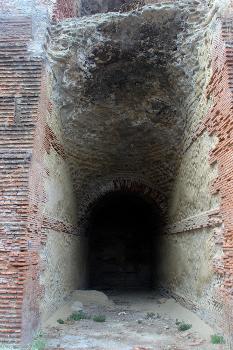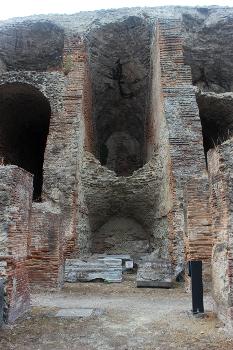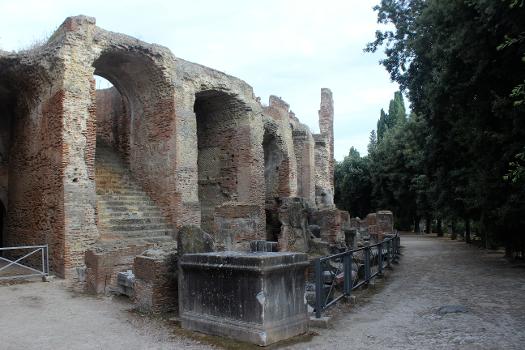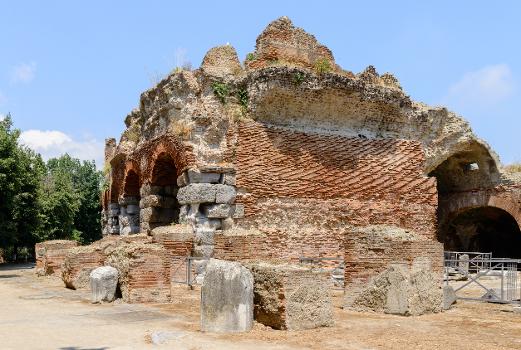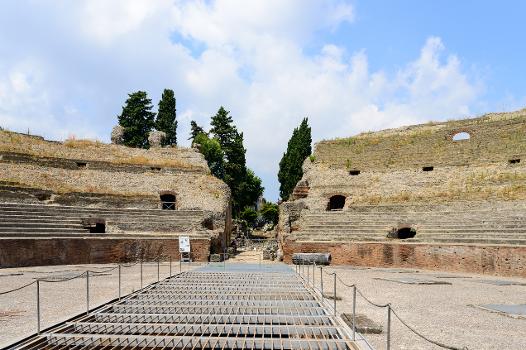General Information
| Name in local language: | Anfiteatro Flavio |
|---|---|
| Other name(s): | Pozzuoli Amphitheater |
| Status: | in ruins |
Project Type
| Material: |
Masonry structure |
|---|---|
| Architectural style: |
Roman |
| Function / usage: |
Amphitheater |
| Plan view: |
Structurae Plus/Pro - Subscribe Now! |
| Structure: |
Barrel vault |
Location
Technical Information
Dimensions
| width | 117 m | |
| length | 147 m | |
| arena | width | 42.33 m |
| length | 72.22 m | |
| cavea | seats | 50 000 |
Materials
| façade |
marble
|
|---|---|
| building structure |
stone
brick |
Excerpt from Wikipedia
The Flavian Amphitheater (Italian: Anfiteatro Flavio Puteolano [aɱfiteˈaːtro 'flaːvjo puteoˈlaːno]), located in Pozzuoli, is the third-largest Roman amphitheater in Italy. Only the Roman Colosseum and the Amphitheatre of Capua are larger. It was likely built by the same architects who previously constructed the Roman Colosseum. The name "Flavian Amphitheater" is primarily associated with the Roman Colosseum.
History
It was begun under the reign of the emperor Vespasian and probably finished under the reign of his son Titus. The elliptical structure measures 147 x 117 meters (482 x 384 feet), with the arena floor measuring 72.22 x 42.33 meters (237 x 139 feet). The arena can hold up to 50,000 spectators. The interior is mostly intact and one can still see parts of gears, which were used to lift cages up to the arena floor. In 305, the arena was the setting for the persecutions of the patron saint of Pozzuoli, Saint Proculus, and the patron saint of Naples, Saint Januarius. After surviving being thrown to the wild beasts in the arena, the two were beheaded at the nearby Solfatara.
The Flavian Amphitheater is the second of two Roman amphitheaters built in Pozzuoli. The smaller and older amphitheater (Anfiteatro minore) has been almost totally destroyed by the construction of the Rome to Naples railway line. Only a dozen arches of this earlier work still exist. This lesser amphitheater measured 130 x 95 meters (427 x 312 feet).
The site of the structure was chosen at the nearby crossing of roads from Naples, Capua, and Cumae. It was abandoned when it was partially buried by eruptions from the Solfatara volcano. During the Middle Ages, the marble used on the exterior was stripped, but the interior was left alone and is perfectly preserved. Excavations of the site were performed 1839 to 1845, 1880 to 1882, and finally in 1947.
Text imported from Wikipedia article "Flavian Amphitheater (Pozzuoli)" and modified on February 14, 2023 according to the CC-BY-SA 4.0 International license.
Participants
Currently there is no information available about persons or companies having participated in this project.
Relevant Web Sites
- About this
data sheet - Structure-ID
20085239 - Published on:
11/02/2023 - Last updated on:
14/02/2023

